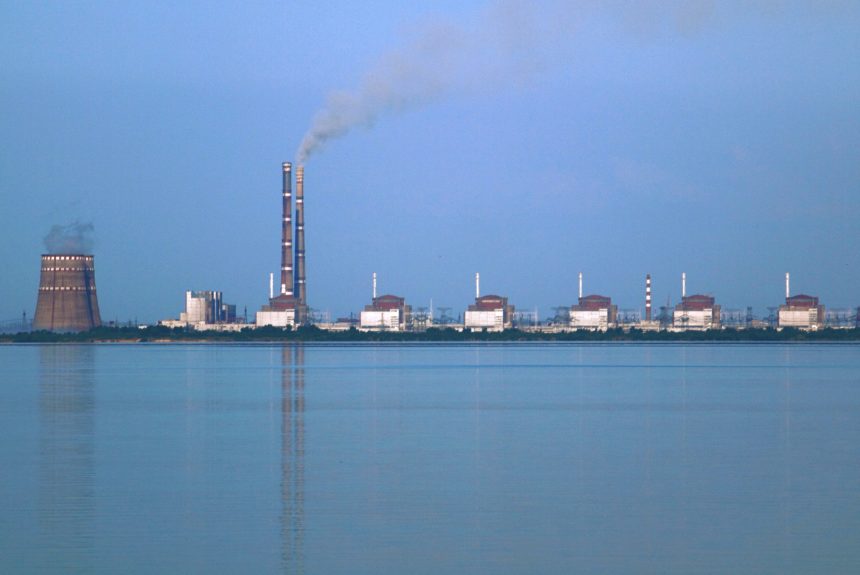When Russian forces captured the decommissioned Chernobyl nuclear power plant on the first day of its invasion of Ukraine, fears of a radioactive nuclear meltdown entered the public psyche on a level not seen since the 2011 Fukushima accident. Knowing that it would spark more panic, Putin attacked the Zaporizhzhia nuclear plant in a two-hour assault that was live-streamed on news channels across the world, and the atomic fear-mongering accelerated.
>>>READ: Let’s Remind Ourselves Again: Nuclear Energy Is Safe
Despite significant shelling, essential safety systems stayed intact and radiation levels never spiked. Chernobyl was occupied for over a month until Russia withdrew its northern flank; Zaporizhzhia continues to be occupied.
Several months into the invasion, it’s clear that radioactive meltdown fears were unfounded. The lesson should be that Ukraine’s nuclear power plants and their operators have stood strong under unprecedented wartime attacks.
As the invasion of Ukraine unfolded, anti-nuclear bias became rampant in the media with front pages dominated by apocalyptic headlines of nuclear catastrophe. Anti-nuclear activists disguised as nuclear experts came out of the woodworks and left-wing media gave them a platform. For example, Politico EU’s coverage prominently featured a “nuclear expert” from Négawatt, a think tank that calls for the elimination of France’s nuclear power industry, which supplies roughly 70 percent of the country’s electricity. He warned of “consequences on a European scale” if a plant was shot at, and when Zaporizhiazhia was attacked days later, Volodymyr Zelensky shared this wild assertion in a public plea for European aid.
The Washington Post’s coverage included hysteria like “I thought about the Cuban missile crisis,” “15 New Chernobyls,” and a reprinting of its front page after the 1986 accident. Stories were filled with fear-inducing quotes It also included an Op-Ed entitled “One thing nuclear power plants weren’t built to survive: War.”, which alleged that the International Atomic Energy Agency (IAEA) misled the public about the radioactive fallout from the 1986 accident while giving Russia a “privileged role.” It doesn’t address the fact that IAEA’s findings on Chernobyl were corroborated by the United Nations, Ukraine, and Belarus.
Despite the apocalyptic headlines, the fact remains that nuclear power is very safe and even our safest source of energy. Zero radiation-related deaths or adverse health effects can be attributed to either the Three Mile Island or Fukushima accidents. The average radiation doses to the public were, at most, comparable to getting an X-Ray.
50 radiation deaths have been attributed to emergency workers on the frontlines at Chernobyl. Around 50 other workers have died in various isolated accidents at nuclear plants over the years, bringing the total death toll attributed to radiation from nuclear plants to about 100. It’s estimated that 160 more Chornobyl-related deaths may occur in the future based on increased cases of papillary thyroid cancer, which has a more than 99% survival rate. These are certainly tragic accidents, but they don’t justify the alarmist rhetoric about wiping out whole continents.
Furthermore, Ukraine’s nuclear power plants are designed to avoid another meltdown. Unlike Chernobyl, all of Ukraine’s reactors are shielded within multiple layers of steel-reinforced containment domes that have been tested to withstand F4 Phantom fighter jets crashing at 500 MPH. Ukraine’s reactors each have multiple backup generators and a passive hydrogen control system designed to prevent an internal explosion if all else fails. Ukraine’s nuclear authority found that “the sequence of events that occurred at Fukushima-1 is impossible for Ukrainian NPPs.”
The invasion may be far from over, but eight reactors currently provide electricity throughout the country, including two at the occupied Zaporizhzhia plant. Most importantly, as the IAEA has confirmed, “no radioactive releases have occurred that may impact the staff at the plants, the public or the environment.” That is an incredible testament to the country’s robust nuclear industry and the safeguards it has implemented over the years, particularly the quality of operators who are keeping the lights on under such duress.
>>>READ: Belgian Nuclear Energy Provides a Way Forward for Europe’s Future
Ukraine could have given up on nuclear power after Chernobyl, but that only would have left them more dependent on Russian oil and gas, as is the case in Germany and other European countries that abandoned nuclear power. In 2019, Zelensky emphatically urged the expansion of Ukraine’s nuclear power in the face of anti-nuclear sentiment, proclaiming,
“In the coming years, many countries will work against nuclear power generation … We, on the other hand, will defend it.”
Zelensky may not have envisioned that Ukraine would soon be literally defending its nuclear power plants from Russian invaders, but his prediction applies nonetheless.
Despite the anti-nuclear rhetoric that has been peddled since its invasion, Ukraine’s nuclear industry has been able to safely and reliably keep the lights on and provide essential energy to counter Putin’s advances. That’s the definition of energy security.
Patrick Hynes is an editorial associate with the American Conservation Coalition and a commentator with Young Voices. He also serves as chair of the Libertarian Party of Washington, D.C.
The views and opinions expressed are those of the author’s and do not necessarily reflect the official policy or position of C3.
